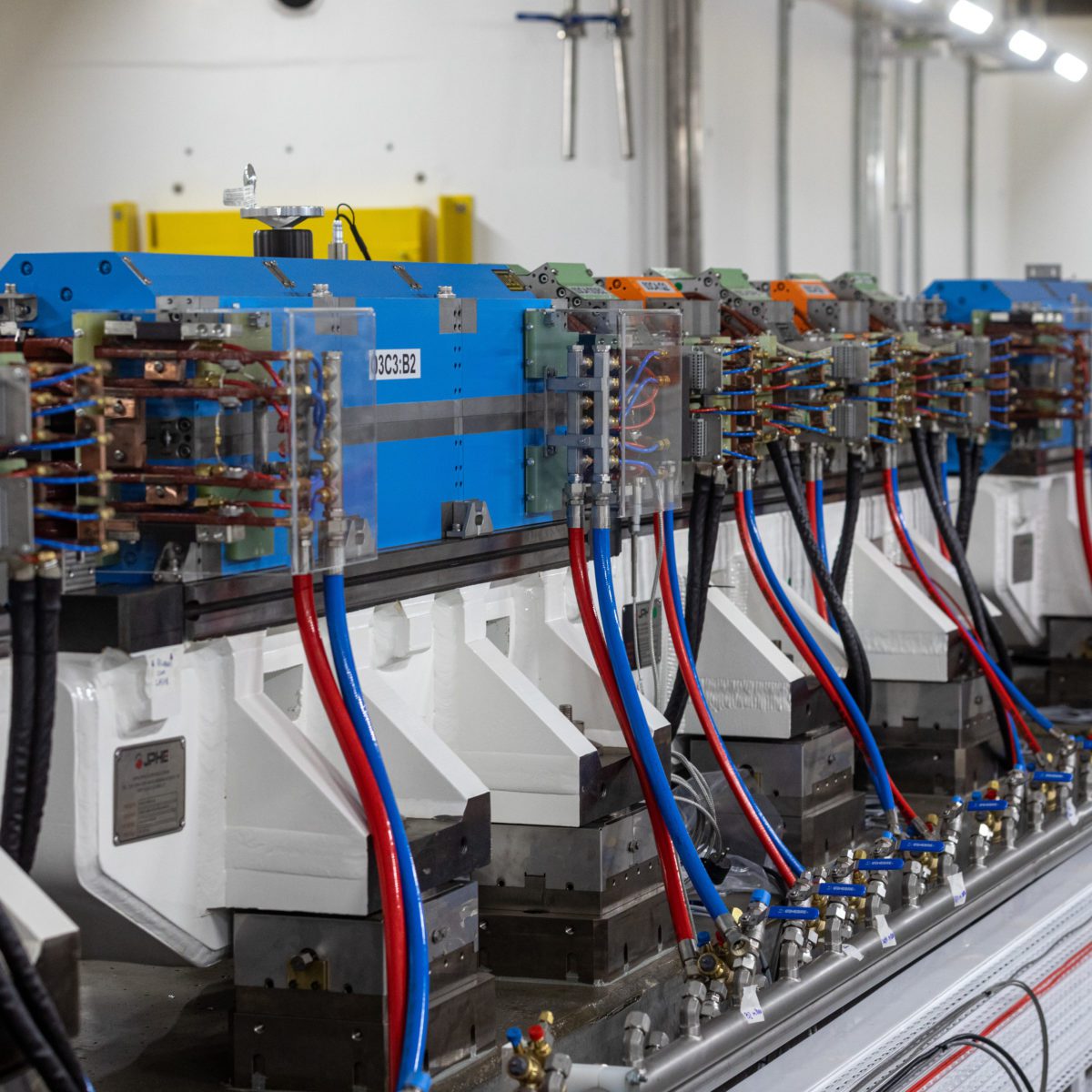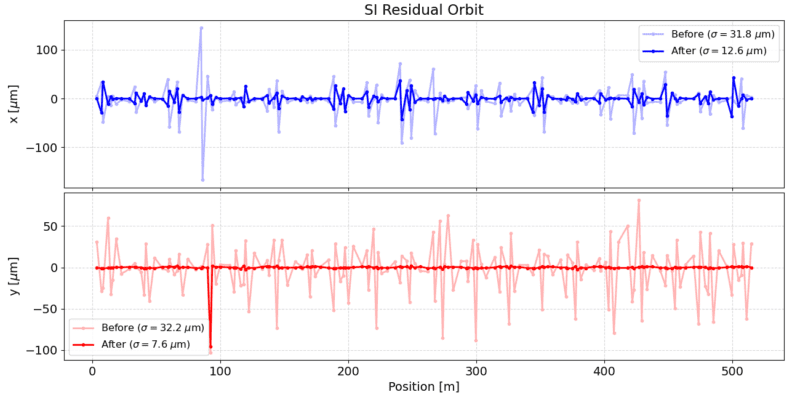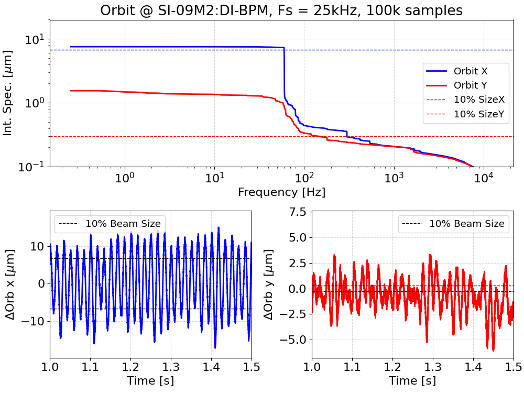
In the first semester, greater emphasis was placed on improving beam stability, operating at higher currents, as well as optimizing the injector system
The operation of the synchrotron light source Sirius in the first semester of 2021 divided the human resources and uptime of the accelerators between machine studies, installation of beamline components, and beamtime for technical and scientific commissioning experiments of the beamlines.
The circumstances of the Laboratory’s operation, with the simultaneous commissioning of accelerators and beamlines, are challenging and unusual in third and fourth generation synchrotron light sources, but have generated rich interactions between the teams involved in the Sirius project. After the magnet alignment period in the first two months of the year, which brought the accelerators to conditions closer to the design specifications, the beam time provided for the beamlines grew progressively, maintaining a good compatibility between the programmed time and the delivered time for the experiments.
From April onwards, the beam availability at the scheduled times for experiments on the beamlines was greater than 95%, with a mean time between failures (MTBF) greater than 30 hours and an average time to recovery from failures of less than two hours, which are very satisfactory levels for the current stage of operation.
Since March 2021 the storage ring current has been maintained in injection mode at 70 mA, with two injections per day. This current is about 1/5 of that specified in the project, reducing the photon flux of the experiments in the same proportion. However, for the current phase of the project, neither the current nor the time between injections has been a limiting factor for the beamline commissioning activities. The top-up injection of the electron beam, under development, should further improve the quality of several aspects of beamline operation.
Accelerator Commissioning
The activities of machine studies and commissioning of accelerators have focused on the characterization of optics and electron beam dynamics, among other various aspects of accelerator physics, and on the delivery of synchrotron light in increasingly better conditions for experiments on the beamlines. In the first semester, greater emphasis was placed on improving beam stability, operating at higher currents, as well as optimizing the injector system.
With the studies and adjustments made after the fine alignment of the accelerators in early 2021, the residual (unwanted) orbit of the electron beam was reduced to about 1/3 of the rms value that existed before the alignment. Additionally, injection from the booster to the storage ring reached the efficiency of about 80% (78%±11%).

Orbit correction before (lighter line) and after (darker line) the fine alignment of the accelerators. Above: horizontal plane. Below: vertical plane.
Currently, electron beam instability is the main limiting factor in beamline commissioning experiments, at least with respect to the characteristics of the beam provided by the storage ring. Instabilities occur at different time scales and affect experiments in different ways. On the time scale of hours, the main instabilities seem to come from movements of the Sirius building, which affects the electron beam in a continuous way, causing the synchrotron light beam to leave the condition of alignment with the optical components of the beamlines. The causes and solutions for this problem are being investigated by groups from CNPEM’s engineering and technology division. On time scales of seconds, the slow correction system (SOFB) has allowed for significant improvements in beam stability. On the other hand, on shorter time scales, the main disturbances occur in the 60 Hz frequency range. These disturbances cause the electron beam to have a larger apparent size for the experiments, resulting in increased focus and loss of coherence when the detector integration times exceed tens of milliseconds. Vertical fluctuations, for example, far exceed the criterion of 10% of the beam size. Nevertheless, data processing and fluctuation filtering strategies are being adopted to overcome this problem until the orbit instabilities are resolved, either by identifying their sources or by the rapid orbit correction system.

Short term orbit stability after implementation of the slow correction system (SOFB). Above: Frequency-integrated spectrum showing orbit perturbation at 60 Hz. Below: Horizontal (left) and vertical (right) orbit perturbation as a function of time.
LNLS opens a call for proposals in other research areas for macromolecular crystallography experiments
Little-understood protein from the SARS-Cov-2 virus is one of the targets of the study by researchers from USP at the synchrotron light source